Real Sharp, Real Fast for Under $50.
If you want to get an animated discussion going within a group of woodworkers, just mention sharpening. Everyone has his or her own answer for getting the best edge in the least amount of time.The price range for sharpening equipment is huge. At the low end of the cost scale is hand sharpening. All you need are a couple water stones and you’re good to go. Hand sharpening is a wonderful skill to have but, like any skill, it takes time and practice to develop. That leaves many woodworkers frustrated and looking for a product that will give them consistent results without the learning curve. The array of sharpening jigs and machines found in woodworking catalogs testifies to that demand. Cost for these sharpening aids can range from a few dollars for a simple jig to hundreds of dollars for a powered machine.
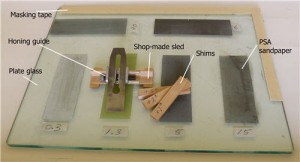
Photo 1. My sharpening system consists of a piece of plate glass, strips of self-stick (PSA) sand paper, and inexpensive commercial honing guide and a simple wood sled. Shims are used to create micro-bevels. Two optional strips of coarse grit in back are used for lapping the backs of chisels and plane blades. Strips of masking tape insure the blade is even with the paper for back lapping.
Some abrasive companies use microns (m) instead of grit sizes. Unlike grit numbers, microns go down as the grit gets finer. I use 15m , 5m , 1.3m and 0.3m. Sandpaper is inexpensive, so you can experiment to find the combination of grits you like best.
The plate glass insures a dead-flat surface so I never spend time flattening dished out stones. The glass should be 1/4″ or thicker and at least 12″ x 18″ to comfortably hold four strips of 3″ x 11″ sandpaper. Have the edges of the glass sanded smooth for safety.
Pull the sled towards you for the sharpening stroke. Keep downward pressure on the blade throughout the pull stroke. Then, tip the blade up so the edge is not in contact with the paper, slide the sled forward, drop the blade, apply pressure and pull towards you again.
Sharpen on the pull stroke only. Otherwise you risk tearing the paper.
Co-Authored And Photographed By Dave Munkittrick
Share tips, start a discussion or ask one of our experts or other students a question.
Already a member? Sign in
10 Responses to “No-Tech Sharpening with Sandpaper”
Premium Membership
Unlock exclusive member content from our industry experts.
- 24/7 Access to Premium Woodworking Videos, Projects, and Tips
- Step-by-Step Instructional Demos, Plans, and Tutorials
- 50% Off Video Downloads Purchased in the Woodworkers Guild of America Shop
- 2 Printable Woodworking Plans
Unlock exclusive member content from our industry experts.
- 24/7 Access to Premium Woodworking Videos, Projects, and Tips
- Step-by-Step Instructional Demos, Plans, and Tutorials
- 50% Off Video Downloads Purchased in the Woodworkers Guild of America Shop
- 2 Full-Length Video Downloads to Watch Offline
- 2 Printable Woodworking Plans
Gold Membership
$370 Value
Get everything included in Premium plus exclusive Gold Membership benefits.
- 24/7 Access to Premium Woodworking Videos, Projects, and Tips
- Step-by-Step Instructional Demos, Plans, and Tutorials
- 8 Full-Length Video Downloads to Watch Offline
- 3 Full-Length Woodworking Classes to Keep for Life
- 7 Printable Woodworking Plans
- Discounts on Purchase-to-Own Content in the Woodworkers Guild of America Shop
- Access to Ask the Expert Program
- Exclusive GOLD LIVE Streaming Events
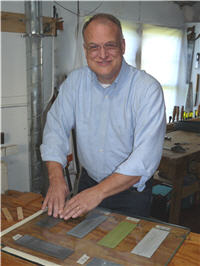
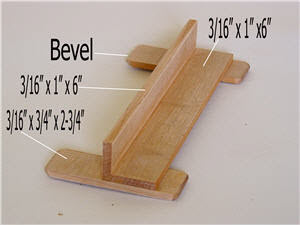
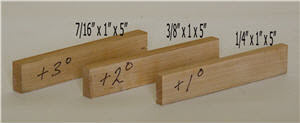
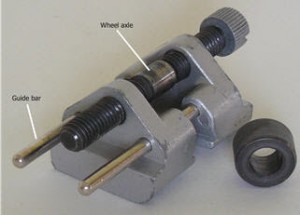
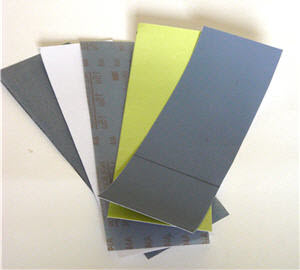
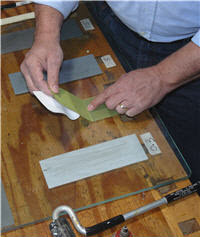
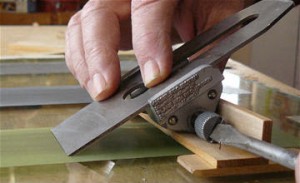
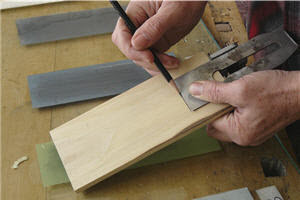
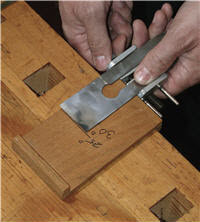
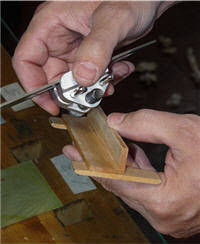

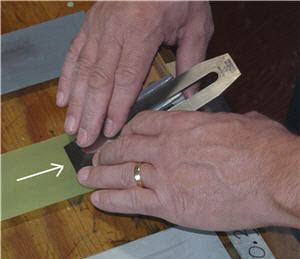
Incredible! I recently got a beginners chisel set and I was stressing about how much whetstones were going to cost to sharpen them, but this looks like it could be very effective as an alternative.
Do not have table saw; how do I thickness the shims and parts of the sled? I assume shims go under between bottom of honing guide and the top surface of sled's bottom "cradle" 3/16" x 1 x 6" board, thus tipping chisel angle upwards to create microbevel? What is board in figs 8 & 9? Are all flat chisels sharpened to same basic angle + a common micro angle--or which chisel gets 1°, 2°, and 3°?
I am a brand new member to the Guild. I am glad to have found this article which took me a little more time than I thought it should but perhaps that's just because I'm not familiar with the system. As as happened with some other articles, I cannot get the photos or short videos to show or play. I keep getting an error message that I should try later and I have tried to do that and it just doesn't seem to work. Thank you for your help, John
It is my first tour at that part of the site. I will be able to say something about the site later on
It looks so nice. I'll try to do it. Thanks for sharing!
This looks good!
Where do I buy one of the sharpener jigs. If it is from you then please send information to John Rea jonjrea@aol.com
Sounds neat. Appears simple, but very effective and repeatable. I'm definetly going to try this method. Thanks for the tip.
I have tried this system but have trouble removing the paper when it gets worn. How do you remove the worn paper? Thanks.
Sounds like a very good idea. I will try this out. Kenn